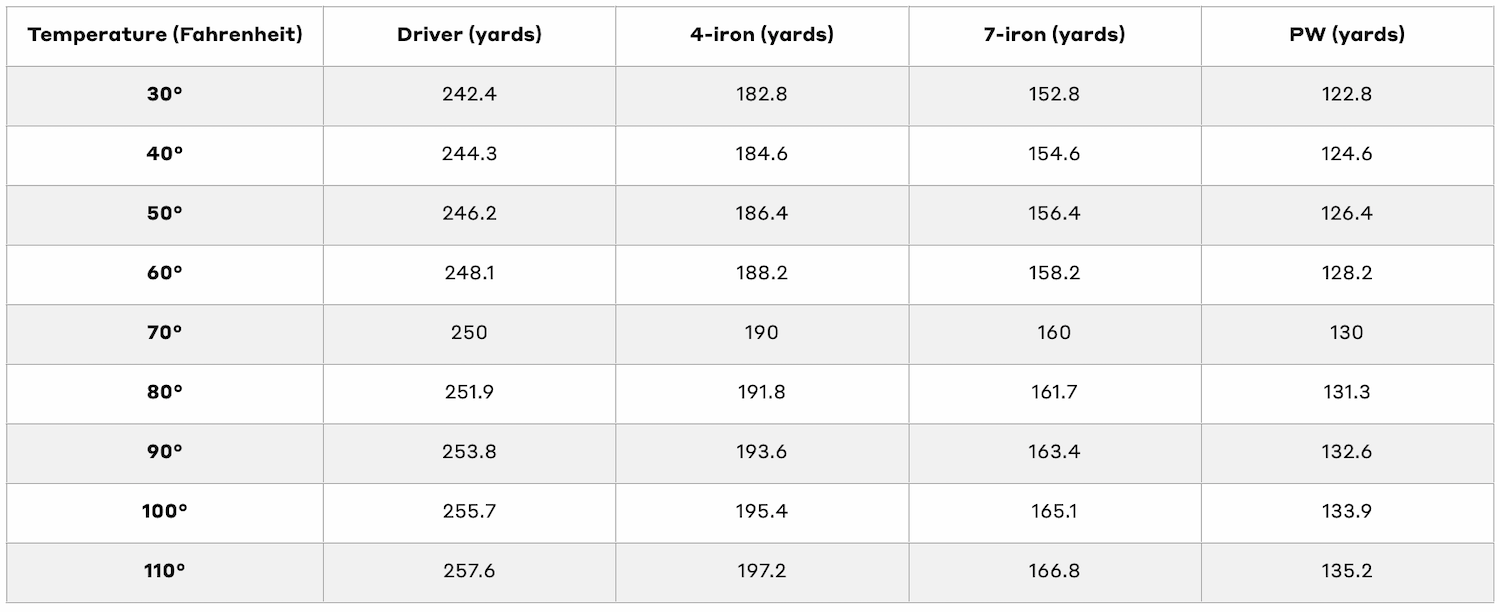
With summer in full swing and record temperatures being set around the country, here are some tips for how to play golf in extreme heat.
Getty Images
From Miami to New York to Seattle to Phoenix (and everywhere in between), the summer temperatures are absolutely excruciating at the moment, which can make it difficult for many people to play golf in the extreme heat.
And I recently read that, despite the heat, golfers aren’t just sitting inside and soaking up the air conditioning. In fact, it’s the opposite, with many courses still seeing average or even slightly more traffic this summer.
As someone who recently returned from a trip east, it’s absurd to see just how hot and humid the conditions are around the country.
For example, while playing a round in Florida a few weeks ago with my brother-in-law, my performance shirt was already drenched with sweat by the time I walked to the range. Guys, I hadn’t even taken a swing yet and I looked like I had run a marathon.
With the temperature near triple digits in many places, understanding how to play golf in extreme heat is so important. Not only to protect yourself from overheating, but also to try and feel comfortable when, you know, you’re sweating profusely before even stepping on the first tee (guilty!).
How to play golf in extreme heat
Before making your next tee time, be sure to remember the below tips, which will help you manage the summer temps — and lead to a more enjoyable round without feeling overheated or mentally exhausted.
1. Hydrate as much as possible
Before even thinking about how to fix your slice or do your best at course management, you need to be sure that your body is prepared for the extreme weather conditions.
That means drinking as much water as possible, while also mixing in other performance drinks that provide electrolytes that you lose by sweating.
While some golfers like to enjoy a few adult beverages during a round of golf, proceed with caution, as alcohol can dehydrate you and lead to a lack of energy and focus.
According to The Vincera Institute, it’s recommended that a player drinks no more than one alcoholic drink per hour — while also maintaining adequate, non-alcoholic liquid consumption.

2. Assess your club choice
So how much will the higher temperatures impact your distances? The photo above helps break it all down for you.
According to the chart (which uses a formula presented by GOLF Top 100 Teacher Andrew Rice, with the assumption that golfers hit their drives about 250 yards with a ball speed of about 150 mph), players gain about two yards on their drives for every 10-degree rise in temperature.
Additionally, distance increase varies for each club. For example, a pitching wedge only gains about 1.3 yards per 10 degrees, according to the findings.
This might seem subtle, but when you take into account the course’s firm conditions, the extra couple of yards could be the difference between being in the fairway and bouncing into the woods.
So if you’re between clubs and aren’t quite sure what to hit, it might be best to club down.
3. Find the sun while putting
Ever wonder why putting greens on the same course feel differently? It’s because the sun is hitting them at different angles all day long.
Obviously, the green that’s protected and/or covered by trees isn’t getting much sunlight, whereas the one that’s exposed all day is getting baked. So remember to keep this in mind as you prepare to tackle a course where extreme temperatures are occurring.
This is where locating the sun comes into play.
According to Kevin Roth of Rotogrinders (via FOX Weather), the sun’s location in the sky can cause the grass to lean toward it. This will cause your putt to roll in a slightly different direction than if the sun were on the other side.
Also, due to dry conditions, there won’t be as much friction as the ball rolls, meaning every putt is going to move a little bit faster than normal — especially if you’re playing in the middle of the afternoon when temps are generally at their highest.
So if you’re playing in the morning, the ball may do one thing. But in the afternoon, the same putt may do something different.
4. Brain fog can impact your play
Remember that whole thing about staying hydrated? Yeah, avoiding brain fog also plays a role in it.
If you’ve ever played in hot, steamy, muggy weather, it probably feels like your focus wanes. Well, it’s not just your imagination, because if you’re dehydrated, that’s exactly what can happen.
So if you’re standing over a putt and just can’t seem to figure out the break or distance, it could be your brain triggering a reminder to drink more water.
Obviously, having brain fog leads to a lack of focus and decreased energy levels, so be sure to limit your sun exposure as much as possible. This means wearing a hat, wrapping a wet towel around your neck to cool down, and using a cart for additional shade, among other things.
5. Adapt to firmer turf
Due to something called “moisture stress” in grass, golf courses located in extreme weather locations may play much faster — especially if there’s been a prolonged drought or temperatures have exceeded normal highs during a summer.
Even if that type of stress isn’t happening and a course is watering as much as possible, players should be prepared for firmer turf conditions.
So take that into account when you’re teeing off and need to stop a shot short of a hazard — as the firmer turf may lead to a ball ending up OB.
The biggest impact that firmer conditions will have is on the putting surface, which I mentioned before. So adapt as best you can, and remember that the secret sauce will be in distance control.
Latest In Instruction
https://ift.tt/7pZr6ds


Tidak ada komentar:
Posting Komentar